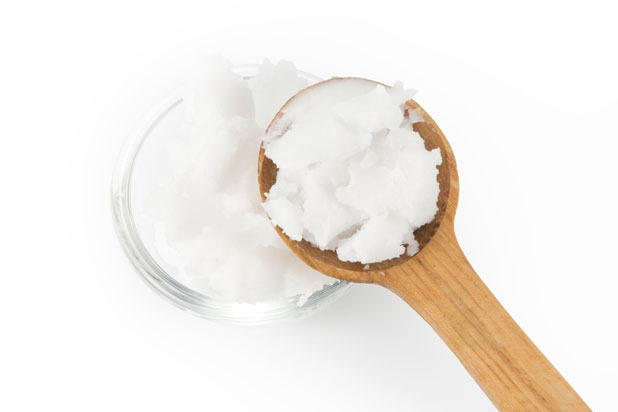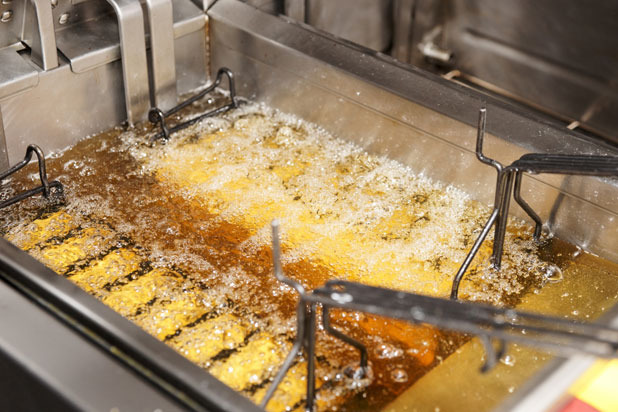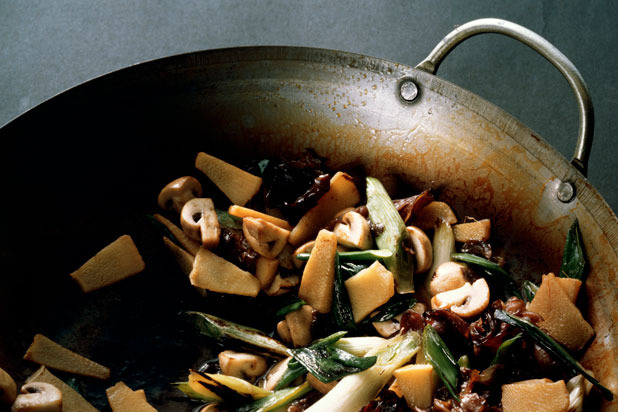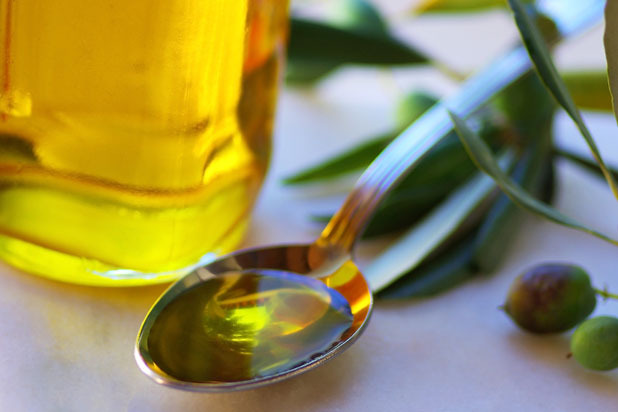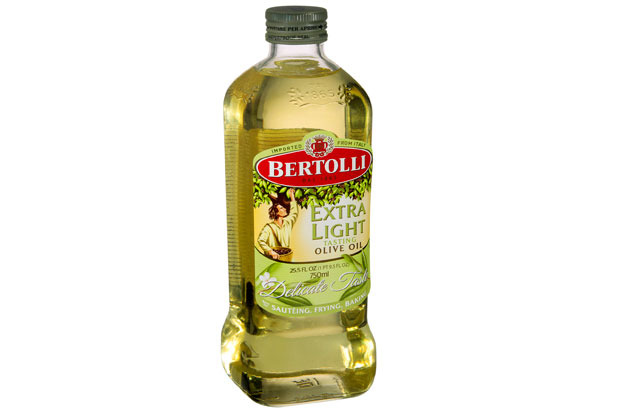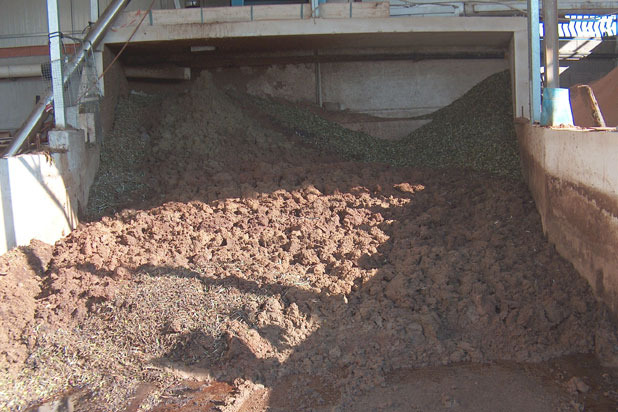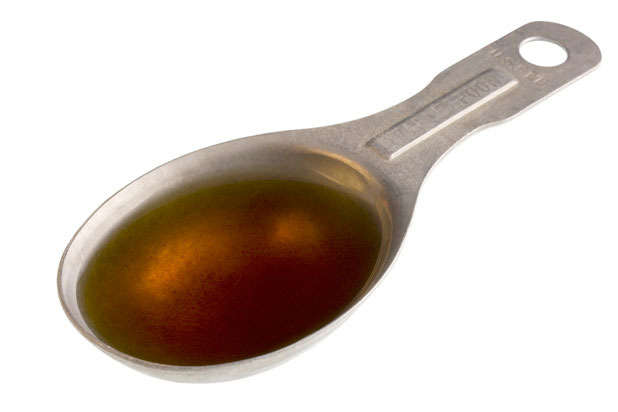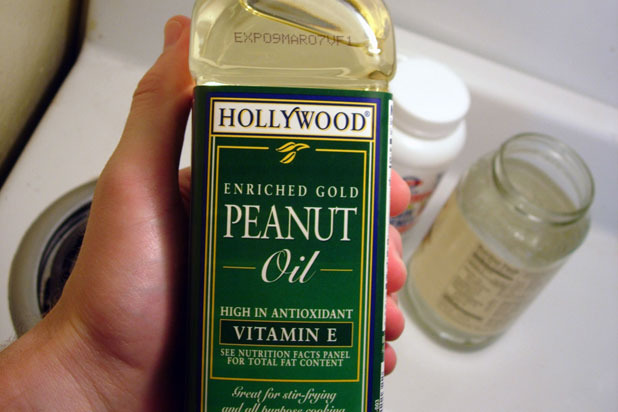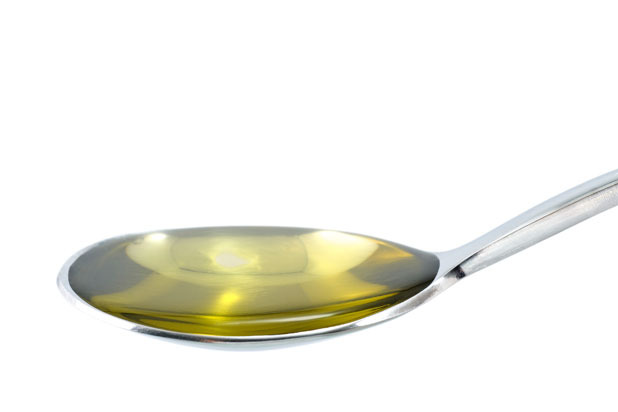Cooking Oils, Simplified Slideshow
The smoke point is the temperature at which a cooking oil starts to break down; once an oil reaches its smoke point, it takes on an acrid flavor and smell. If your oil starts to smoke, take it off the heat and start over with fresh oil.
2. Definition: Saturated Fat
Saturated fats are generally solid at room temperature and come from animal products, such as butter and lard, but some plant oils such as coconut oil, palm oil, and cocoa butter are also significant sources of saturated fat. According to the Centers for Disease Control (CDC), "Diets high in saturated fat have been linked to chronic disease, specifically, coronary heart disease." In other words, it's the type of fat that you'll want to stay away from.
3. Definition: Polyunsaturated Fat
Polyunsaturated fats are a type of heart-healthy fat that are found in products such as grapeseed and walnut oils. They come in two forms: omega-3 and omega-6. They don't hold up well to heat or light and have a fairly short shelf life, so store them in dark glass bottles and use them soon after purchasing. Unrefined oils that are made up mostly of polyunsaturated fats are generally meant for flavoring rather than cooking.
4. Definition: Monounsaturated Fat
Monounsaturated fats are another type of heart-healthy fat found in liquid form. Good sources of monounsaturated fat include olive, peanut, and sesame oils. Monounsaturated fats have a longer shelf life than polyunsaturated fats due to their chemical structure, but don't last as long as saturated fats.
5. Definition: Refined
Refined oils generally have higher smoke points and little to no flavor, which, depending on the kind of cooking you're doing, may just be what you're looking for. Baking or deep-frying? You're probably looking for a refined oil. Just know that many refined oils are produced using a chemical process (described in the next slide).
6. Definition: Expeller-Pressed
Most refined oils are extracted from nuts, seeds, or other organic materials using a chemical process, typically involving hexane, a known carcinogen. Expeller-pressed oils, however, are extracted without the use of chemicals; instead, the oil is extracted using intense pressure to turn the raw materials into pulp. Expeller-pressed oils are not necessarily "cold-pressed," however (see slide 7). Most likely due to their chemical-free process, expeller-pressed oils tend to cost more.
7. Definition: Cold-Pressed
"Cold-pressed" doesn't have an official definition in the United States, but in Europe, oils extracted using this method cannot exceed 122 degrees Fahrenheit during the process. Cold-pressed oils are generally considered "unrefined" and have low smoking points, and should not be used for high-heat cooking techniques such as stir-frying or sautéing. True cold-pressed oils are an important component of a raw-food diet.
8. Vegetable Oil
Just what exactly is vegetable oil, anyway? In our survey of popular brands, it looks like it's just a euphemism for soybean oil, but look on the back of your favorite brand of potato chips, and you'll see there's a different story. The line typically reads something like the following: "Vegetable Oil (contains any or all of the following: Sunflower, Corn, and/or Canola Oil)." No wonder we've yet to see a recipe actually call for soybean oil.
Vegetable oil is useful for just about any application calling for high heat and a neutral flavor, from marinades to stir-fries to good old sautéing and deep-frying.
One tablespoon of soybean oil contains 120 calories, 0 milligrams cholesterol, and 14 grams fat, of which 2 grams are saturated, 8 grams are polyunsaturated, and 3 grams are monounsaturated.
Smoke point: 495 degrees Fahrenheit
9. Canola Oil
Although canola oil is also a vegetable oil, it is marketed as a separate product, at least when it's not used to fry up a bag of chips (see slide 8). According to Barbara Ann Kipfer's The Culinarian: A Kitchen Desk Reference, "canola" stands for "Canadian oil, low acid."
Canola oil is practically tasteless and odorless, so it can be used just like any other vegetable oil. It is a product of a genetically-modified version of the rapeseed plant, dubbed the canola plant, grown in northern North America (aka Canada) and known for its omega-3 content, which helps lower cholesterol and triglyceride levels. One tablespoon of canola oil contains 120 calories, 0 milligrams cholesterol, and 14 grams fat, of which 1 gram is saturated, 4 grams are polyunsaturated, and 8 grams are monounsaturated.
Smoke point: 400 degrees Fahrenheit
10. Corn Oil
Yes, here's another vegetable oil that's marketed separately from its ilk once you get away from the junk-food aisle.
One tablespoon of corn oil contains 120 calories, 0 milligrams cholesterol, and 14 grams fat, of which 2 grams are saturated, 8 grams are polyunsaturated, and 4 grams are monounsaturated.
With similar nutrition facts and similar flavor and uses, it's no wonder corn and canola oil get lumped together as "vegetable oil" in processed product ingredient lists.
Smoke point: 450 degrees Fahrenheit
11. Olive Oil
Here is one of the most confusing products on the shelf in the cooking oils aisle at the supermarket: olive oil. It's the base for many Spanish, Italian, Greek, and French dishes; without it, everything from arrabbiata to vinaigrette just wouldn't taste the same. For an explanation of the different types of olive oil you're likely to encounter, read onto the next slide.
One tablespoon of olive oil typically contains 120 calories, 0 milligrams cholesterol, and 14 grams fat, of which 2 grams are saturated, 2 grams are polyunsaturated, and 10 grams are monounsaturated.
12. Extra-Virgin Olive Oil
The official definition from the International Olive Council (yes, there really is an olive oil police) states that extra-virgin olive oil is "virgin olive oil whichhas a free acidity, expressed as oleic acid, of not more than 0.8 grams per 100 grams." It must be "obtained from the fruit of the olive tree solely by mechanical or other physical means under conditions, particularly thermal conditions, that do not lead to alterations in the oil, and which have not undergone any treatment other than washing, decantation, centrifugation, and filtration." What does this mean in English?
In this country, not much really. That's because even though the USDA recently adopted the IOC's (the olive oil police, not the folks in charge of the Olympics) standards in October 2010, they are completely voluntary. That's probably why a lot of "extra-virgin" olive oils are on the "extra-blah" side when it comes to flavor. The USDA certification process, should a manufacturer decide to submit their product for testing, allows them to slap a "U.S." in front of the "extra-virgin olive oil" label.
If you do find a fine-tasting extra-virgin olive oil, confine your usage of it to salad dressings and other heat-free applications, to better appreciate its subtle (or perhaps bold) flavors.
Smoke point: 320-405 degrees Fahrenheit (higher-quality olive oils with lower acidity have higher smoke points)
13. Extra-Light Olive Oil
Don't confuse extra-light olive oil with extra-virgin olive oil; in fact, it's pretty much the polar opposite. Some people think that "extra-light" refers to the oil's caloric or fat content; however, just like nearly every oil in this roundup, "extra-light" olive oil contains the same 120 calories and 14 grams of fat per tablespoon. If anything, the term refers to the oil's flavor, or lack thereof. Because it is made of a blend of refined olive oil (olive oil extracted by chemical processes, aka the cheap stuff that sounds expensive) and virgin olive oil, it has a significantly higher smoke point than extra-virgin olive oil.
Smoke point: 468 degrees Fahrenheit
14. Olive Pomace Oil
If extra-virgin oil results from the first pressing of olives, then olive pomace oil is what you get from the leftovers after nothing else could possibly be squeezed out by mechanical means. It comes from what little oil is left in the pulp, or pomace. A chemical process just like the one used to produce refined vegetable oils is needed to produce this oil, which technically isn't olive oil anymore since the IOC defines olive oil as "oil obtained solely from the fruit of the olive tree, to the exclusion of oils obtained using solvents or re-esterification processes." And in case that wasn't clear enough, they go on to say, "In no case shall this blend be called olive oil." The USDA definition is pretty much the same. Olive pomace oil does have a very high smoke point, however, and can consequently be used for frying.
Smoke point: 460 degrees Fahrenheit
15. Sesame Oil
Popular in Asian cooking, unrefined or toasted sesame oil isn't really used for cooking, per se, but more as a flavoring agent. Use it sparingly to give stir-fries, marinades, dressings, and curries a pronounced, rich, nutty flavor.
Refined sesame oil can be used for high-temperature cooking.
One tablespoon of sesame oil contains 120 calories, 0 milligrams cholesterol, and 14 grams fat, of which 2 grams are saturated, 4 grams are polyunsaturated, and 8 grams are monounsaturated.
Smoke point, refined: 410 degrees Fahrenheit
16. Peanut Oil
Peanut oil's fat is mostly monounsaturated, making it a heart-friendly option for those watching their diet. It holds up well to high temperatures and is great for deep-frying and sautéing.
One tablespoon of peanut oil contains 120 calories, 0 milligrams cholesterol, and 14 grams fat, of which 2.5 grams are saturated, 5 grams are polyunsaturated, and 6 grams are monounsaturated.
Smoke point: 440 degrees Fahrenheit
17. Grapeseed Oil
Grapeseed oil is obtained from the seeds leftover from winemaking. It doesn't taste like much of anything and can be used instead of canola oil or olive oil as a light base for dressings. Its high smoke point means it is also ideal for baking, sautéing, and stir-frying.
One tablespoon of grapeseed oil contains 120 calories, 0 milligrams cholesterol, and 14 grams fat, of which 2 grams are saturated, 1.5 grams are polyunsaturated, and 10 grams are monounsaturated.
Smoke point: 420 degrees Fahrenheit
18. 120 Calories per Tablespoon
You may have noticed by now that every oil featured here has 120 calories per tablespoon. Coincidence? Not really. That's because the densities of many of the cooking oils featured here are fairly similar, which results in the same number of calories per tablespoon.

